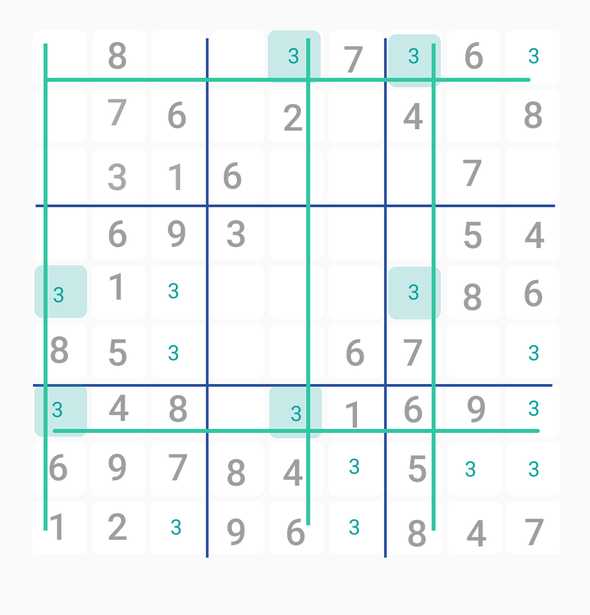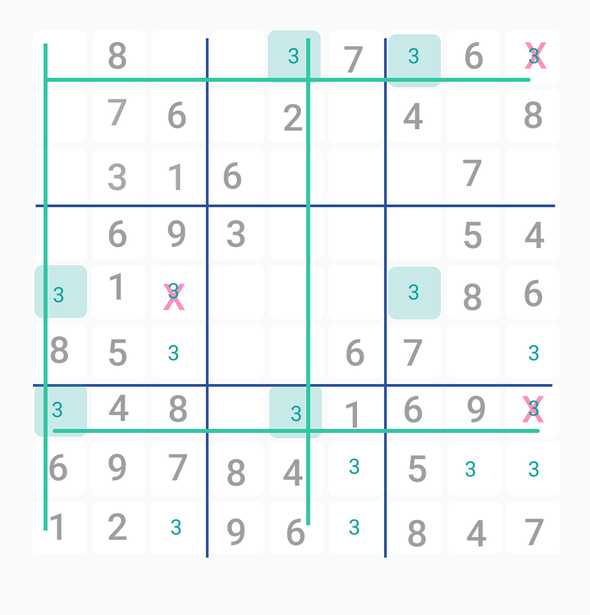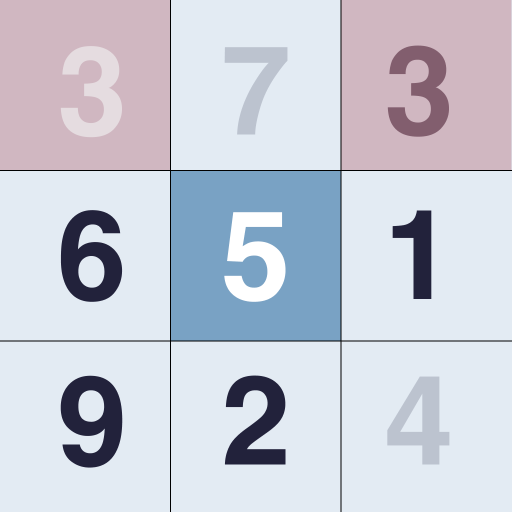
Sudoku: Swordfish technique explained
What is Swordfish pattern in sudoku?
The Swordfish technique is a specific strategy used in Sudoku that involves a pattern of cells where a particular candidate appears in three different rows that align to form three columns (or vice versa). This technique may sound complicated at first, but it becomes easier to grasp once you can visualize the Swordfish pattern.
To illustrate how the Swordfish technique works, let's consider the following example of Sudoku. In this example, all the penciled-in candidates are the number 3. By examining the grid, you can see that there are three rows where the number 3 appears in different cells, and these rows align in a way that forms three columns with the number 3 as well. This specific arrangement of cells is what's referred to as the Swordfish pattern.

Although it may not be immediately obvious, the penciled-in number 3s in the Sudoku grid form a Swordfish pattern that can help solve the puzzle. It might not seem like any of these candidates can be eliminated to place a 3 in any cell, but by recognizing the Swordfish pattern, we can narrow down the possible locations for 3s.
Remember, a Sudoku Swordfish pattern occurs when the same candidate appears in three different rows or columns that align to form three columns or rows. In this case, we have a Swordfish pattern where the number 3 appears in three different rows that align to form three columns.
To make it easier to see, we have highlighted the Swordfish pattern in the example below and indicated the rows and columns that form the pattern. By identifying this Swordfish pattern, we can use it to eliminate certain candidates in other cells and further progress towards solving the puzzle.
How to solve sudoku with swordfish pattern?
At first glance, the highlighted cells in the previous example may not seem particularly significant. However, by applying some clever logic, we can use the Swordfish pattern to eliminate certain candidates from the grid.
Specifically, we can eliminate every penciled-in number 3 that appears in any row or column that is not included in the highlighted cells of the Swordfish pattern. This is not just limited to the area between the highlighted cells; we can apply this logic to the entire length of the six rows and columns that consist of nine cells each.
By doing this, we can immediately eliminate three of the penciled-in number 3s from the grid, as they appear in rows and columns that are not part of the Swordfish pattern. This reduces the number of possible locations for the number 3 in the puzzle and brings us closer to solving it.

By recognizing and applying the Swordfish technique, we can simplify complex Sudoku puzzles and solve them more efficiently. This is just one example of how the Swordfish pattern can be used to eliminate candidates and make progress in solving a Sudoku puzzle. With practice and experience, you can master this technique and tackle even the most challenging Sudoku puzzles with confidence.
In summary, the Swordfish technique is a strategy used in Sudoku to identify a pattern of cells where a particular candidate appears in three different rows that align to form three columns (or vice versa). By recognizing and applying the Swordfish pattern, we can eliminate certain candidates from the grid and simplify the puzzle. This technique requires some practice and experience, but it can be a valuable tool for solving even the most advanced Sudoku puzzles. By incorporating the Swordfish technique and other advanced strategies, you can become a skilled Sudoku solver and take your puzzling skills to the next level.
How to detect swordfish pattern in sudoku?
To detect the Swordfish pattern in Sudoku, you need to look for a particular arrangement of cells in which the same candidate appears in three different rows that align to form three columns (or vice versa). Here are the steps to follow:
- Look for a candidate that appears in at least three different rows or columns.
- Identify the rows or columns that contain the candidate.
- Check if the candidate appears in exactly three cells in each of the rows or columns identified in step 2.
- If the candidate appears in exactly three cells in each of the rows or columns, then you have found a Swordfish pattern.
Once you have identified the Swordfish pattern, you can use it to eliminate certain candidates from the grid, as these candidates cannot appear in any other cells in the rows or columns that form the pattern. By eliminating these candidates, you can simplify the puzzle and make progress towards solving it.
What to do next?
Install sudokuplus.net app and try solving your first sudoku using advanced technicques and practice using swordfish pattern to your advantage!

Previous: Sudokuplus apk download | Next: Sudoku Solving Algorithms: Backtracking, Dancing Links, and More
